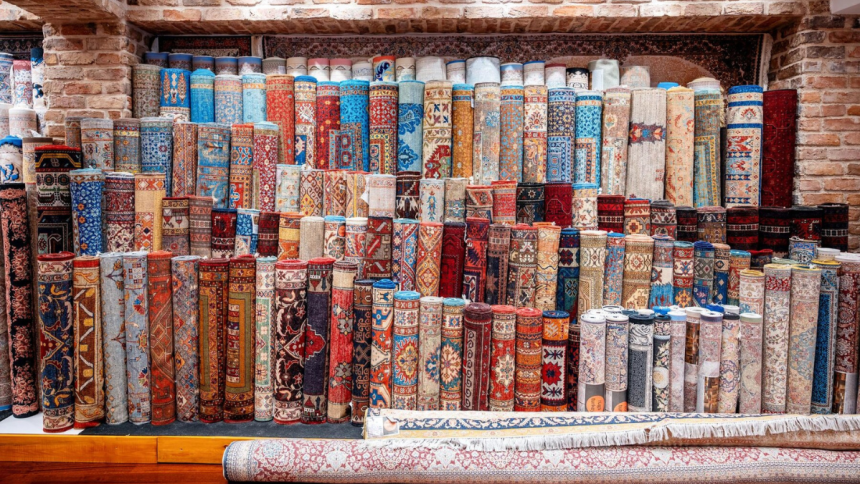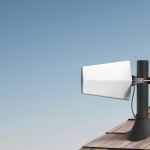A Persian rug is more than just a floor covering; it’s a statement piece that can transform the look and feel of your living room. With their intricate patterns, rich colors, and centuries-old craftsmanship, Persian rugs bring an element of luxury, tradition, and artistry to your space. But with so many different styles, sizes, and colors to choose from, selecting the perfect Persian rug for your living room can feel overwhelming.
Whether you’re a first-time buyer or a seasoned collector, this guide will walk you through the key factors to consider when choosing a Persian rug that complements your living room’s aesthetic, size, and functionality. So have your online store for Persian rugs on standby and let’s dive into how to find the perfect Persian rug that will elevate your space.
Understand the Basics of Persian Rugs
Before you begin shopping, it’s important to familiarize yourself with the basics of Persian rugs. Persian rugs are handwoven, often made of wool, silk, or a combination of both. The level of craftsmanship and materials used plays a significant role in the rug’s quality and price. Understanding these elements can help you make an informed decision.
Key Characteristics of Persian Rugs:
- Materials: Persian rugs are typically made from wool, silk, or a blend of both. Wool rugs tend to be more durable and versatile, while silk rugs are incredibly luxurious but more delicate.
- Knotting: Persian rugs are known for their intricate knotting techniques, such as Persian or Senneh knots, which contribute to their dense, high-quality pile.
- Designs and Patterns: Persian rugs are often decorated with detailed motifs, such as florals, medallions, and geometric patterns. The design often reflects the region in which the rug was made, with specific motifs and color schemes tied to different areas of Persia (modern-day Iran).
- Color Palette: Persian rugs come in a wide range of colors, from deep reds and blues to softer pastels. The colors can be bold or subtle, depending on your preference.
Consider Your Living Room’s Aesthetic
Your Persian rug should be a reflection of your personal style and fit harmoniously with your living room’s overall decor. Start by considering the aesthetic of the space you’re working with.
Traditional vs. Modern Design
- Traditional Living Rooms: If your living room has a more traditional or classic design, you might prefer Persian rugs with rich, bold patterns, such as floral medallions, intricate borders, and deep, vibrant colors. Rugs from regions like Isfahan, Tabriz, or Kashan often feature elaborate designs that complement formal or antique-style furnishings.
- Modern Living Rooms: For a more contemporary or minimalist living room, you might opt for a Persian rug with simpler, more geometric designs or a muted color palette. Modern Persian rugs, often referred to as modern or distressed Persian rugs, feature abstract patterns and subdued hues, blending well with clean-lined furniture and neutral walls.
Color Scheme
The color of your Persian rug will have a significant impact on the room’s overall vibe. Here are a few considerations:
- Bold, Warm Tones (Red, Gold, Burgundy): If your living room features earthy tones like browns, beiges, or dark woods, a rug with bold red, gold, or burgundy hues can add warmth and sophistication. These colors are commonly found in Tabriz, Kashan, and Heriz rugs.
- Cool Tones (Blue, Green, Navy): For a calming and serene atmosphere, choose rugs with cool tones like blue, green, or navy. These colors work well in spaces with neutral walls and furniture, offering a contrast without overwhelming the space.
- Neutral Colors (Ivory, Beige, Gray): Neutral-colored Persian rugs, such as those with ivory, beige, or light gray backgrounds, can fit seamlessly into virtually any decor style. They’re a great choice for modern or Scandinavian-inspired living rooms, as they add texture and elegance without clashing with other design elements.
Pattern and Design
Consider how the pattern of the rug will interact with the rest of your room. If your furniture already has bold patterns or textures (like floral couches or striped curtains), you may want a rug with a subtle design to balance things out. Alternatively, if your living room has simple, monochromatic furniture, a rug with an intricate, eye-catching design can serve as a focal point for the room.
- Medallion Rugs: These rugs feature a central motif, often in the shape of a large medallion surrounded by smaller patterns. They work well in both traditional and modern settings.
- Geometric Rugs: Persian rugs with geometric patterns offer a more modern, abstract feel. These rugs work well in contemporary spaces or if you’re looking to add a touch of boldness to a minimalist room.
- Floral Rugs: Traditional floral designs are common in Persian rugs and evoke a sense of warmth and timelessness. These patterns are ideal for a cozy, inviting living room, especially if your space leans toward a more classic or vintage aesthetic.
Choose the Right Size Rug for Your Space
Size is one of the most important factors to consider when selecting a Persian rug for your living room. A rug that is too small can make the room feel disjointed, while one that is too large may overwhelm the space.
Standard Sizing
Persian rugs come in a variety of sizes, from smaller runner rugs (ideal for entryways or narrow spaces) to large area rugs that can cover most of your living room floor. Some standard sizes include:
- 5′ x 8′
- 6′ x 9′
- 8′ x 10′
- 9′ x 12′
How to Measure Your Space
To choose the right size rug, start by measuring the area where you want to place the rug. In a living room, a good rule of thumb is to have the rug cover the area under your furniture. If you have a sofa and chairs, aim for the rug to fit underneath the front legs of the furniture, ensuring it creates a cohesive look. For larger spaces, you can go with a rug that covers most of the floor.
- Full Coverage: A large rug that spans the entire living room is ideal for open floor plans.
- Partial Coverage: If you prefer the look of a smaller rug, you can place it underneath the coffee table or a section of the seating area, but make sure it doesn’t appear too small for the room.
Rug Placement Tips
- In a rectangular living room, a rectangular rug is usually the best option.
- In a square living room, you can opt for either a square or rectangular rug, depending on the flow of the space.
- Round rugs can also work well in smaller, cozier living rooms or if you have a circular coffee table.
Quality and Craftsmanship: What to Look For
When shopping for a Persian rug, quality should be at the forefront of your mind. Persian rugs are handwoven, and the quality of the craftsmanship can greatly affect their durability and value.
Knot Density
The density of the knots is an indicator of quality. Higher knot counts mean more intricate designs and a finer texture. Look for rugs with at least 200 knots per square inch (KPSI) for a high-quality, dense rug.
Material Matters
Wool is the most common material used in Persian rugs, and it’s known for its durability, softness, and ability to retain color. Silk Persian rugs are more delicate and luxurious, typically reserved for special occasions or less trafficked areas of the home.
Handmade vs. Machine-Made
While machine-made rugs are less expensive, they don’t offer the same level of craftsmanship or uniqueness as handmade Persian rugs. Always opt for handmade rugs if you want to preserve the authenticity and artistry of the piece.
Consider the Rug’s Functionality
Lastly, think about the functionality of your Persian rug. While Persian rugs are beautiful, they should also be practical for your living room.
- High Traffic Areas: If your living room gets a lot of use (children, pets, guests), choose a durable wool rug with a dense knot count that can withstand heavy foot traffic.
- Low Traffic Areas: For spaces that won’t see much wear and tear, you can go for a silk rug or a more delicate design that emphasizes beauty over durability.
Buying Persian Rugs Online: What to Know
Shopping for a Persian rug online offers convenience and access to a wide range of options, but it also requires some careful consideration:
- Verify Authenticity: Ensure the store sells authentic Persian rugs. Look for detailed product descriptions, including the origin, material, and knot count.
- Return Policy: Check the return and exchange policy before purchasing, especially if you’re buying a rug without seeing it in person.
- Customer Reviews: Read customer reviews to gauge the quality and service of the online store you’re buying from.
Conclusion
Choosing the perfect Persian rug for your living room is about balancing style, size, color, and quality. By understanding the different styles, patterns, and materials, you can find a rug that complements your space, enhances your decor, and lasts for generations. Whether you opt for a traditional floral rug or a modern geometric design, a well-chosen Persian rug can become the focal point of your living room, adding both beauty and comfort to your home.
Lynn Martelli is an editor at Readability. She received her MFA in Creative Writing from Antioch University and has worked as an editor for over 10 years. Lynn has edited a wide variety of books, including fiction, non-fiction, memoirs, and more. In her free time, Lynn enjoys reading, writing, and spending time with her family and friends.















